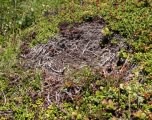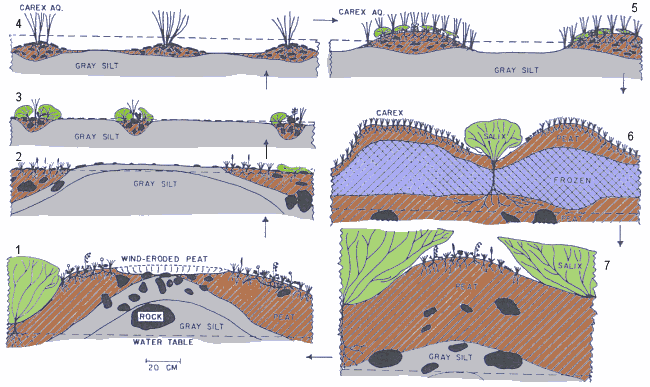|
Primary succession
In a primary succession, the establishment of new plant communities depends on the
immigration of seeds or vegetative parts and on the ability of species to establish on new substrates.
The best known primary successions in alpine environments are in areas exposed by the retreat of glaciers.
These areas are especially useful for ecological research because it is often possible to determine
the exact age of the various successional stages. This research is also important due to the accelerated
retreat of glaciers in the wake of global climate change.
So, where do the seeds come from that initiate primary succession in glacier forefields
and similar areas?
Most of the seeds or plant fragments probably reach the area by downslope processes (such as streams
or avalanches) from the vegetation that is situated above the newly exposed ground. However, wind or
animals may also contribute some seed input from other sources.
In contrast to many lowland environments, where new substrate may be colonized rapidly
by ephemeral plants, the first
communities in alpine areas mostly consist of single plants of a few
pioneer species which are able to develop and establish under severe environmental conditions.
Seedlings often establish in the vicinity of large stones. Without the presence of such microtopographical
niches, colonization may be considerably delayed. The combination of the local dispersal of seeds and
sharply bounded microsites often produce a strikingly clustered and patchy distribution
of the first pioneer plants in primary succession.
After the first species have got a foothold in the new area, further vegetation
development may be promoted by clonal growth of some of the established
species and by increased colonization by plant species in established vegetation
nearby. These species may take advantage of improvements in soil conditions (for example increased
organic matter and soil nitrogen) brought about by the pioneer vegetation. Further succession can produce
a variety of different plant communities depending on the habitat conditions. The pioneer species will
then more or less remain restricted to unstable sites such as riverbanks, solifluction slopes, small
screes, etc. Under the severe environmental conditions above treeline, it may often take about 100 years
for the establishment of climax species.
|

 1
1
 2
2
